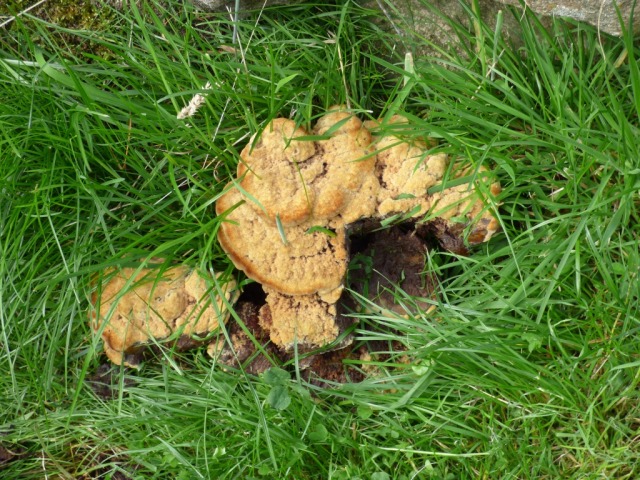The summer season marches on and most of us are probably checking the calendar to make sure it is still July and not September. A wind from the north has left us feeling cooler this week with daily bouts of sun, rain and cloud gracing the reserve. The wet summer has benefits for some, particularly fungi which are popping up all around the reserve. This dyer’s mazegill is a root fungus of conifers and grows on the Scots pine on the reserve. It contains strong yellow-brown pigment which can be used to dye wool and fabric; younger fruiting bodies can produce a surprisingly-bright golden yellow colour.
The steady procession of wildflowers continues to add dashes of bright colour to the reserve. The delicate blue-purple harebell is flowering in the heaths and grasslands. Often called the Scottish bluebell, harebells are unrelated to spring-flowering bluebells. They belong to the genus Campanula whose name is derived from the latin campana meaning bell. Studying bells and bell-making has never been my cup of tea, however being called a campanologist has a certain ‘ring’ to it..!
A favourite of bumblebees, the purple or white spikes of foxgloves can be seen around the visitor’s centre and at New Kinord. Look out for the less-common great mullein – a yellow relative of the foxglove.
The meadows along the north shore of Loch Kinord are bathed in pinks, purples, blues, yellow and white. The bounty of flowers and variety of colour attract a diverse range of insects which in turn attract a few of our damselflies looking for a meal on the wing.
The small white and pink flowers of eyebright are popping up along track edges. These unassuming little plants are actually hemiparasites – they attach themselves to grasses via root connections (called haustoria) in order to steal energy and nutrients to grow.
One of our more unusual plants has started flowering out on the dry heath to the south of the reserve. Intermediate wintergreen is rare across Scotland but has a stronghold at Muir of Dinnet. It grows in heath dominated by bearberry and is shaded out if the heather gets too tall. The heath is burned in small patches every year to make sure plants like the bearberry and wintergreen always have somewhere to grow.
This week’s blog will end with an insight into the Muir of Dinnet nightlife. With the help of a motion-detecting camera, we have been recording some of the shy and nocturnal wildlife found on the reserve. The peanuts, peanut butter and strawberry jam used as bait quickly attracted a regular squirrel who featured in the majority of videos the camera recorded over 2 weeks.
However, when night time fell, other animals came out to investigate. Roe deer were the most common night-time visitor.
The star of the show for the past 2 weeks definitely goes to the tawny owl. It is unlikely that it was attracted by peanut butter and jam, but maybe by the rustling of a mouse or vole that took to the bait. The camera will be deployed in different locations around the reserve over the summer. Who knows what antics will be picked up, so watch this space for further updates.















